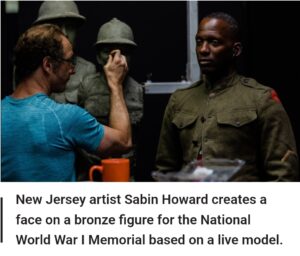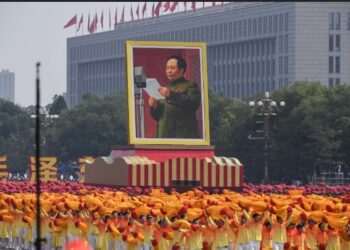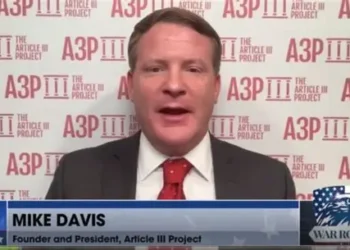Conservative American artists increasingly use various mediums to express their activism and advocate for their values. From painting and sculpture to film, photography, and digital art to architecture, these artists challenge liberal narratives in the art world by offering perspectives rooted in patriotism, traditional values, and free speech. This essay explores the impact of art as a medium for political and social commentary

Scott LoBaido is known for his patriotic paintings and sculptures, often featuring the American flag and tributes to veterans and first responders. His “Flags Across America” project involved painting a giant American flag on one rooftop in each of the 50 states stirring up dialogue about national identity and honoring those who defend American
freedoms.

Jon McNaughton is another prominent patriotic painter, known for his works that depict American history and political themes. His paintings often feature key political figures and symbolic imagery, aiming to provoke thought and discussion about contemporary issues and the nation’s founding principles.

Sabin Howard’s sculptures commemorate historical figures and events that align with conservative values. His classical techniques are evident in works like the National World War I Memorial, being installed in Washington, D.C. in September 2024, which honors American soldiers’ bravery and sacrifice. Howard’s sculptures celebrate heroism, valor, and American patriotism.

Steve Bannon, Host of the WarRoom, has contributed to conservative activism through film and documentary production. His films explore themes related to American history, politics, and culture from a conservative perspective. Notable works include “The Undefeated,” which chronicles Sarah Palin’s political rise, and “Clinton Cash,” which investigates the financial dealings of the Clinton Foundation.

Other conservative documentary filmmakers have also made impressive contributions to political discourse. Dinesh D’Souza is known for films such as “2016: Obama’s America” and “Hillary’s America: The Secret History of the Democratic Party,” which explore American history and politics from a conservative viewpoint. Andrew Breitbart, founder of Breitbart News, is known for “Hating Breitbart” a documentary about his efforts to expose liberal media bias. Phelim McAleer and Ann McElhinney have produced “FrackNation,” which opposes the anti-fracking narrative, and “Gosnell: The Trial of America’s Biggest Serial Killer,” which examines issues related to abortion.

In the digital age, conservative photographers and digital artists have found powerful platforms for their activism through social media. David Burnett, an acclaimed photojournalist, captures images reflecting the struggles and triumphs of everyday Americans, focusing on themes like individual liberty, the Second Amendment, the U.S.A. military and rural American life. His photography emphasizes values of hard work, independence, and resilience.

Digital artists also play a powerful role in conservative activism, creating visually compelling content—memes, infographics, and digital illustrations—that communicates conservative messages effectively. Social media allows these artists to reach vast audiences, fostering communities of like-minded individuals and amplifying their voices in the cultural and political landscape.

Architecture designed with conservative statements emphasize traditional values, history, and national pride. Hillsdale College’s Christ Chapel in Michigan expresses conservative principles with its classical design, highlighting faith, tradition, and Western educational ideals.
American conservative contemporary artists play a crucial role in political and cultural activism. Through various forms of art, including painting, sculpture, film, photography, digital art, and architecture, they challenge ubiquitous narratives, celebrate traditional values, and engage with pressing social and political issues. Their work enriches the cultural fabric of the nation and inspires dialogue and reflection on the diverse values that define American society. By using their art to communicate powerful messages, these artists demonstrate that individuals can advocate for their beliefs and values, influence public opinion, and inspire change within their communities and beyond.
***Next Man Up***





